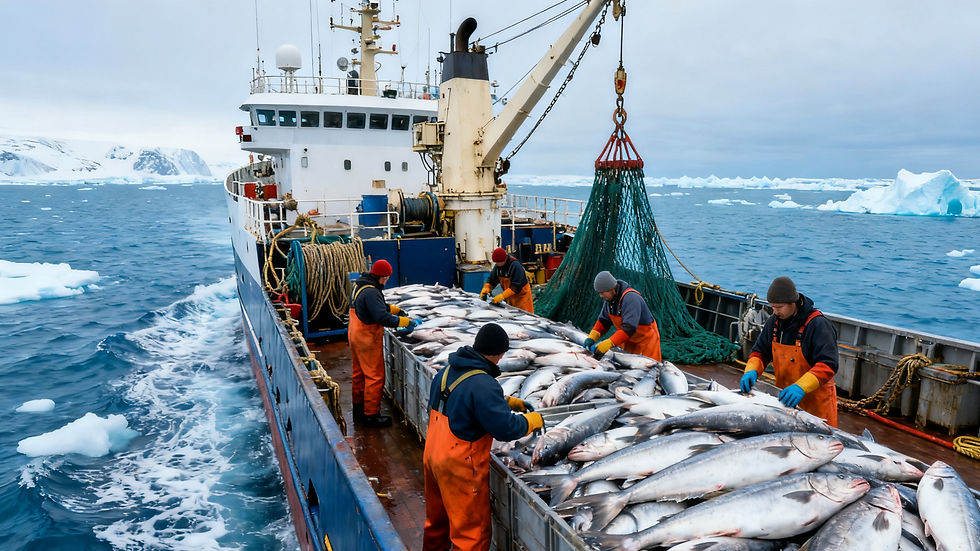South Korea's Mackerel Market Sees "Rising Volume and Price": 56% Import Growth Still Fails to Ease Demand
- Easy Seafood

- Sep 21
- 2 min read
In 2025, South Korea's frozen mackerel market witnessed a rare phenomenon of "rising volume and price" — from January to August, imports surged by 56.1% year-on-year to 40,010 tons (a record high), yet wholesale market prices in September soared by nearly 40% in a single month, highlighting the supply-demand contradiction.
1. Import Pattern: Norway Dominates Over 70%, Diversification Begins
Norway's Leadership: By the end of August, Norway's exports of mackerel to South Korea reached 31,554 tons, accounting for 78.87% of total imports, with an average unit price of 2.81 USD/kg (far higher than China's 1.87 USD/kg).
Other Suppliers: China ranked second with 3,913 tons (9.78% of total imports), followed by the UK (1,772 tons) and the Netherlands (1,294 tons).
Diversification Progress: The number of exporting countries increased from 5 in 2024 to 12 in 2025 (new additions include Taiwan Region, Faroe Islands, etc.), but Norway's dominant position remains unshakable in the short term.
2. Price Surge: Nearly 40% Rise in a Month, Driven by Both Supply and Demand
Price Data: In early September, the wholesale price of Norwegian frozen mackerel (300/500g size) reached 136,000 KRW (approximately 97.14 USD), up 36.68% from August's 99,500 KRW; the 400/600g size rose by 37.69% to 137,000 KRW (approximately 97.86 USD).
Key Causes:
Demand Side: Mackerel is a rigid demand in Korean cuisine (commonly used in households and catering). It is also a popular healthy choice due to its high protein and Omega-3 fatty acids, and serves as an affordable protein source amid inflation, leading to strong rigid demand.
Supply Side: Global mackerel fishing quotas have been cut and inventories are tight. Additionally, South Korean wholesalers adopt a "restricted sales" strategy (releasing inventory in batches to stabilize high prices), further exacerbating the supply-demand imbalance.
3. Norway: Coexisting Advantages and Concerns
Advantages: Norwegian mackerel has higher fat content and a mellow taste, which aligns with South Korean consumers' preference for "plump and fatty fish". Medium-to-large sizes are more popular in autumn and winter.
Concerns: Global fishing quotas for Northeast Atlantic mackerel have been reduced, posing a risk of lower output in the future; South Korea's accelerated import diversification may lead to a gradual loss of Norway's market share in the long run.
4. Conclusion: Supply-Demand Contradiction Awaits Resolution
The core contradiction in the current market lies in the conflict between "rigid demand" and "limited supply" — increased imports still fail to fill the demand gap. If fishing quotas do not loosen and import diversification fails to break the bottleneck of "rising volume but not quality", the price uptrend may continue. Norway needs to address quota pressures, while South Korea should build a more stable supply chain to ease "price hike anxiety".




Comments